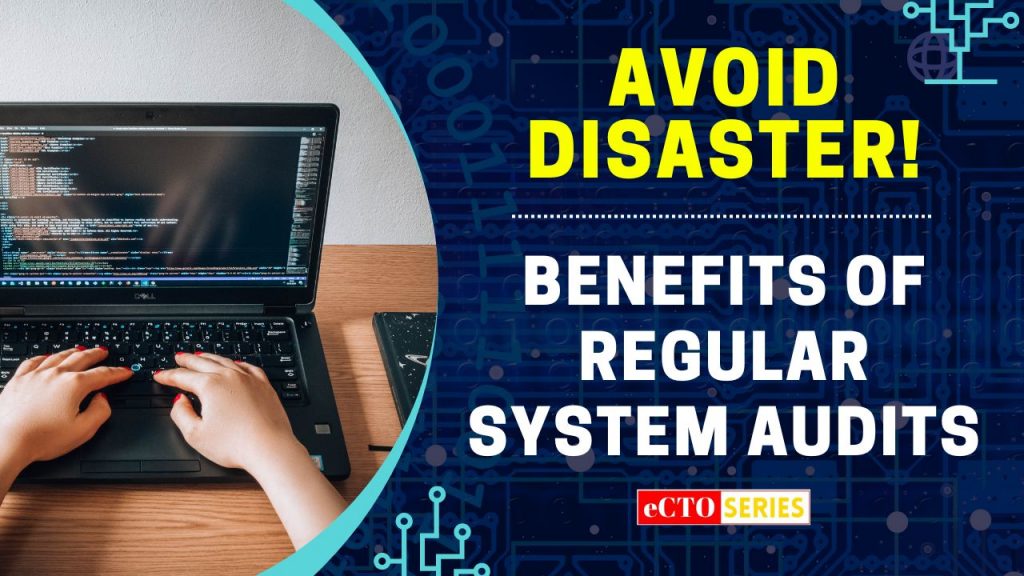Don’t Wait for Disaster to Strike: The Benefits of Regular System Audits

In today’s fast-paced digital landscape, businesses heavily rely on their computer systems to store and process critical data, manage operations, and maintain a competitive edge. However, without proper maintenance and regular audits, these systems can become vulnerable to cyber threats, performance issues, and compliance violations.
In this article, we will explore the benefits of conducting regular system audits and how they can help businesses mitigate risks, optimize efficiency, and safeguard their digital infrastructure.
Importance of System Audits:
1. Identifying Vulnerabilities:
One of the primary reasons for conducting regular system audits is to identify vulnerabilities in the network, applications, and data storage systems. Audits can uncover security gaps, outdated software, misconfigurations, or weak access controls that could potentially be exploited by cybercriminals. By proactively identifying and addressing these vulnerabilities, businesses can significantly reduce the risk of data breaches, unauthorized access, and other security incidents.
2. Assessing System Performance:
System audits also provide valuable insights into the performance of the IT infrastructure. Auditors can analyze various metrics such as response times, throughput, and resource utilization to identify bottlenecks and areas for improvement. By addressing performance issues, businesses can enhance the speed, reliability, and scalability of their systems, leading to improved user experiences and increased productivity.
3. Enhancing Security Measures:
Regular system audits enable businesses to evaluate the effectiveness of their existing security measures, such as firewalls, antivirus software, and intrusion detection systems. Auditors can assess the configuration, patching status, and overall robustness of these security controls. By identifying gaps and implementing necessary enhancements, organizations can strengthen their security posture and better protect their sensitive data from evolving cyber threats.
4. Ensuring Regulatory Compliance:
Compliance with industry regulations and data privacy laws is crucial for businesses operating in various sectors. System audits help organizations assess their adherence to relevant compliance requirements, such as the General Data Protection Regulation (GDPR) or the Health Insurance Portability and Accountability Act (HIPAA). By identifying compliance gaps and implementing necessary measures, businesses can avoid costly penalties, reputational damage, and legal consequences.
5. Preventing Data Loss:
Data is the lifeblood of modern businesses, and any loss or corruption can have severe consequences. Regular system audits can help identify vulnerabilities in data backup and recovery processes, ensuring that critical data is adequately protected and can be restored in the event of a disaster. By implementing robust backup strategies and testing their effectiveness, organizations can minimize the risk of data loss and ensure business continuity.
6. Streamlining Operations:
System audits can uncover inefficiencies, redundancies, and bottlenecks in business processes that rely on technology. By identifying areas for optimization, businesses can streamline their operations, automate manual tasks, and reduce the overall cost of IT management. This leads to improved operational efficiency, increased employee productivity, and better resource allocation.
7. Minimizing Downtime:
Downtime can be costly for businesses, resulting in lost revenue, decreased customer satisfaction, and damaged reputation. Regular system audits help identify single points of failure, inadequate backup systems, or outdated hardware that may contribute to system downtime. By addressing these issues proactively, organizations can minimize the risk of unplanned outages and ensure high availability of their critical systems.
8. Optimizing System Efficiency:
System audits provide an opportunity to evaluate the performance and utilization of hardware and software components. By analyzing resource consumption, organizations can identify underutilized assets, optimize configurations, and make informed decisions about infrastructure upgrades or replacements. This leads to improved system efficiency, reduced energy costs, and better utilization of IT resources.
9. Maximizing Return on Investment:
Investments in IT infrastructure and software can be substantial, and businesses need to ensure that they are getting the maximum return on their investment. System audits help assess the alignment of IT assets with business objectives, identify areas of overprovisioning or underutilization, and make recommendations for optimizing resource allocation. By maximizing the value derived from IT investments, organizations can achieve higher profitability and competitive advantage.
Steps for Conducting System Audits:
1. Choosing an Audit Methodology:
Before conducting a system audit, it is essential to determine the appropriate audit methodology. There are various frameworks and standards available, such as the ISO 27001, NIST Cybersecurity Framework, or COBIT. The chosen methodology should align with the organization’s industry, size, and specific requirements.
2. Conducting a Risk Assessment:
A risk assessment is a crucial step in the system audit process. It involves identifying potential threats, assessing their likelihood and impact, and prioritizing areas of focus. By understanding the risks associated with the IT infrastructure, auditors can tailor their approach and allocate resources effectively.
3. Analyzing Audit Results:
Once the audit is conducted, the next step is to analyze the findings and observations. This includes evaluating vulnerabilities, performance metrics, security controls, compliance gaps, and operational inefficiencies. The analysis should provide actionable insights and recommendations for improvement.
4. Implementing Recommendations:
Based on the audit results, organizations should develop a plan to implement the recommended changes and enhancements. This may involve updating software, strengthening security controls, optimizing configurations, or investing in new technologies. It is crucial to prioritize the implementation based on the severity and potential impact of each recommendation.
Regular system audits are a proactive measure that helps businesses identify vulnerabilities, assess system performance, enhance security measures, ensure regulatory compliance, prevent data loss, streamline operations, minimize downtime, optimize system efficiency, and maximize return on investment. By conducting thorough audits and implementing necessary improvements, organizations can safeguard their digital infrastructure, mitigate risks, and maintain a competitive edge in today’s technology-driven world.
Businesses can benefit greatly from the expertise of a Virtual Chief Technology Officer (e-CTO) provided by iLearnFromCloud.com. These professionals possess the necessary experience, technical know-how, and deep understanding of IT systems to assist organizations with system audits.
By collaborating with the organization’s team, the e-CTO can align business goals, improve efficiency, and ensure the effectiveness of the audit process. Their expertise enables businesses to identify vulnerabilities, implement robust security measures, optimize system performance, and maximize the value derived from their IT investments. With the guidance of a Virtual CTO, organizations can confidently navigate the complex landscape of system audits and fortify their digital infrastructure
FAQs On the Importance of System Audits:
Q1: How often should system audits be conducted?
A1: The frequency of system audits depends on various factors such as industry regulations, the complexity of the IT infrastructure, and the organization’s risk tolerance. In general, it is recommended to conduct audits annually or whenever significant changes occur in the technology environment.
Q2: Can system audits help prevent cyber attacks?
A2: While system audits cannot guarantee the prevention of all cyber attacks, they play a crucial role in identifying vulnerabilities and implementing necessary security measures. By proactively addressing weaknesses, organizations can significantly reduce the risk of successful cyber attacks.
Q3: Are system audits only relevant for large organizations?
A3: No, system audits are relevant for businesses of all sizes. Small and medium-sized enterprises can benefit from audits by identifying vulnerabilities, optimizing operations, and ensuring regulatory compliance within their limited resources.
Q4: Can system audits improve the efficiency of business processes?
A4: Yes, system audits can identify inefficiencies, redundancies, and bottlenecks in business processes that rely on technology. By optimizing these processes, organizations can streamline operations, reduce costs, and improve overall efficiency.
Q5: How can a Virtual Chief Technology Officer (e-CTO) assist with system audits?
A5: A Virtual Chief Technology Officer (e-CTO) from iLearnFromCloud.com can provide the necessary experience, technical know-how, and deep understanding of IT systems to assist businesses with system audits. They can work with the organization’s team to align business goals, improve efficiency, and ensure the effectiveness of the audit process. Their expertise can help businesses identify vulnerabilities, implement security measures, optimize performance, and maximize the value derived from IT investments.
Take Action NOW!
Unleash the full potential of your business with our game-changing eCTO services at https://www.ilearnfromcloud.com/shop/cto.
Discover the transformative capabilities of our e-CTO and how it can effectively support your IT company‘s growth. Learn more: https://bit.ly/IT_Partner
Discover How Our e-CTO (Virtual CTO) Drives Explosive SME Business Growth | Learn More: https://bit.ly/CTO-for-SME






